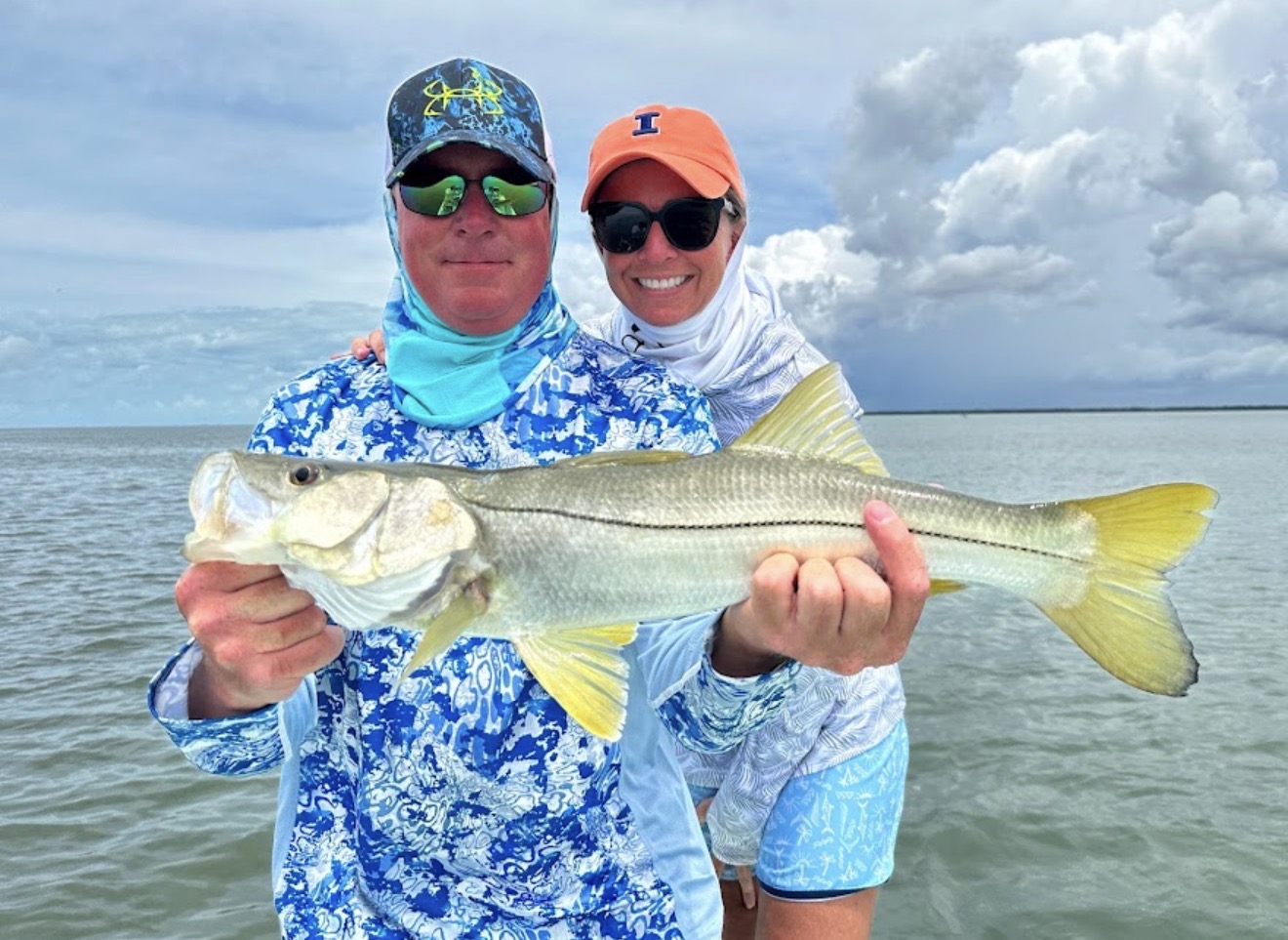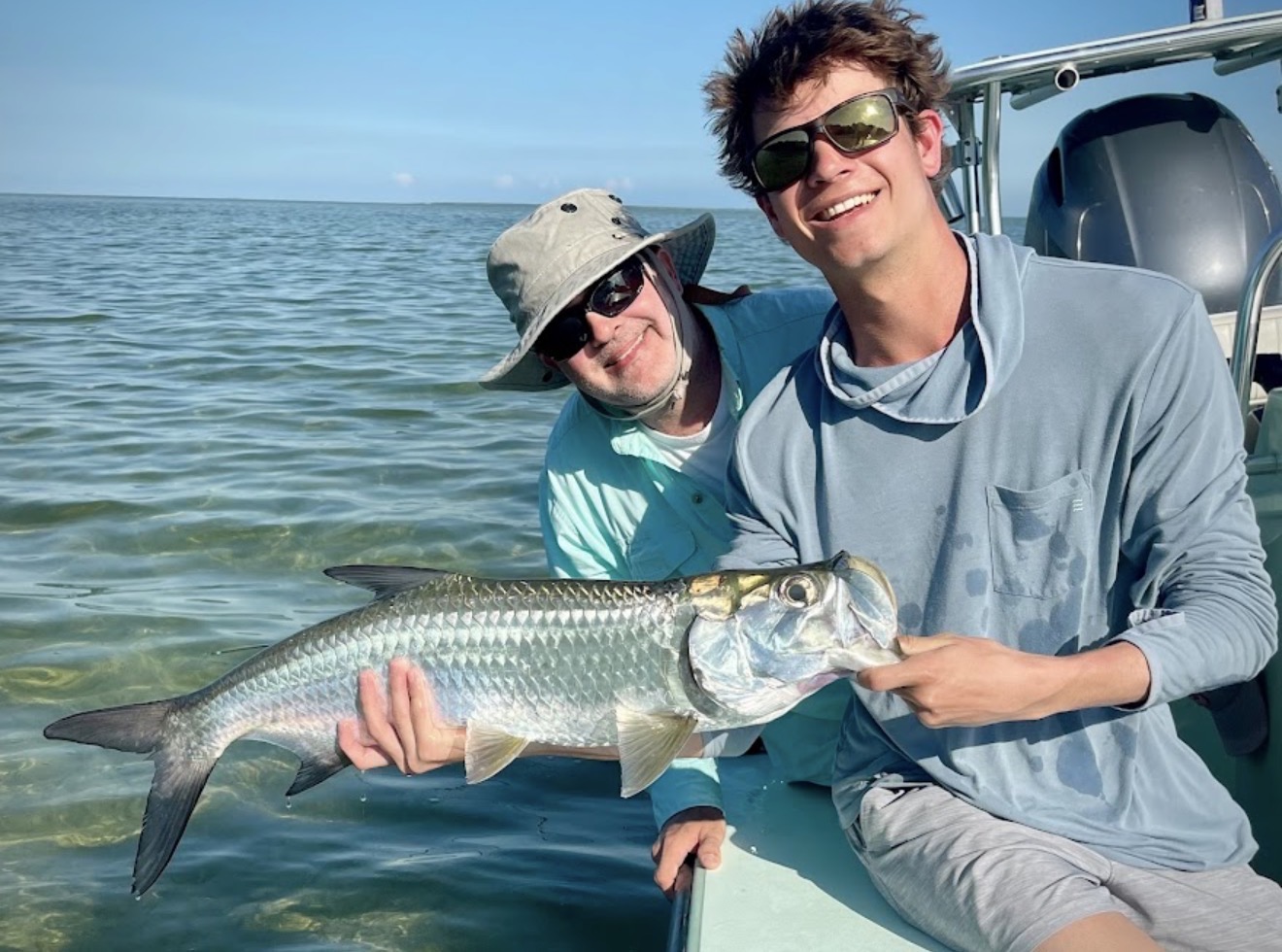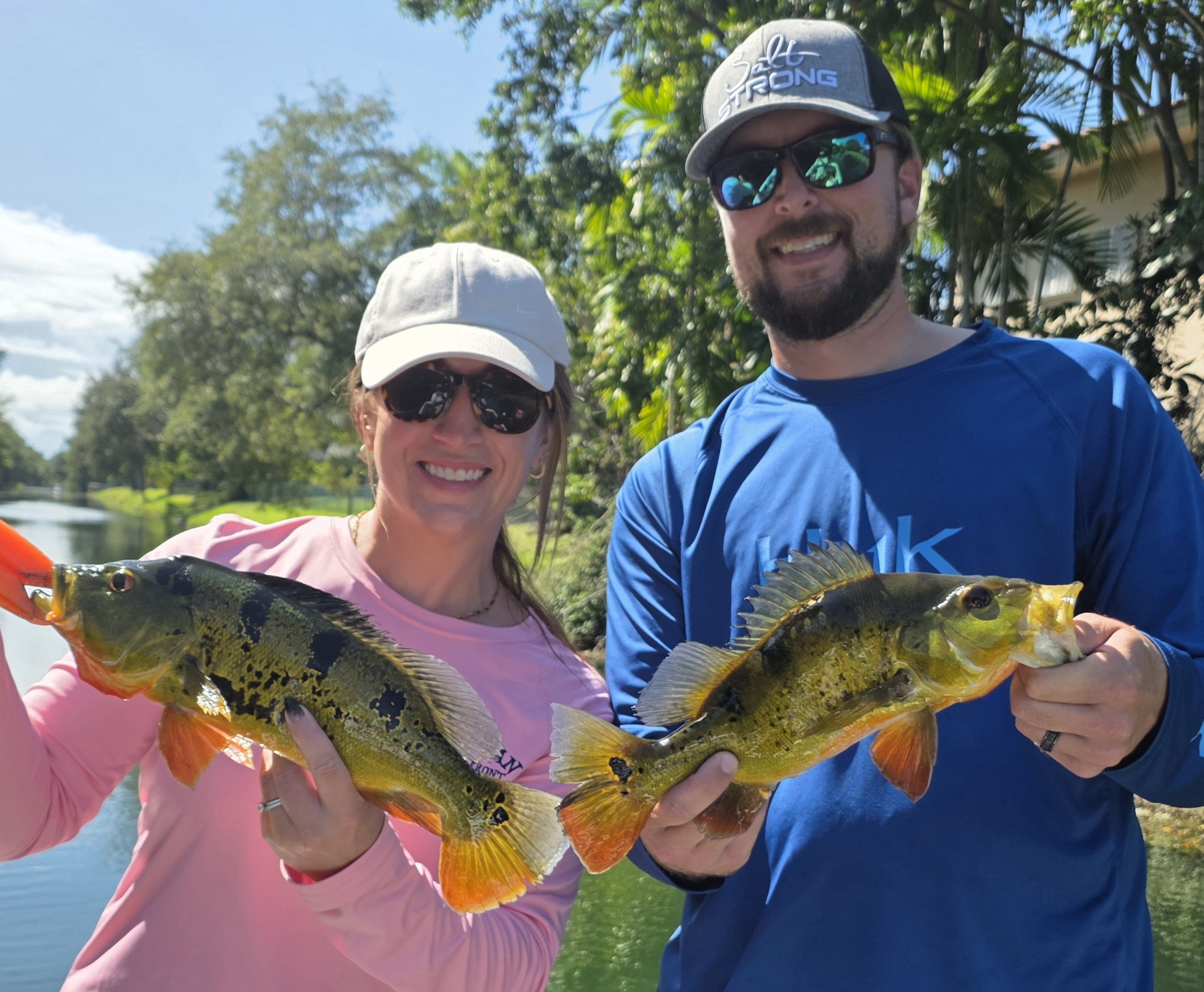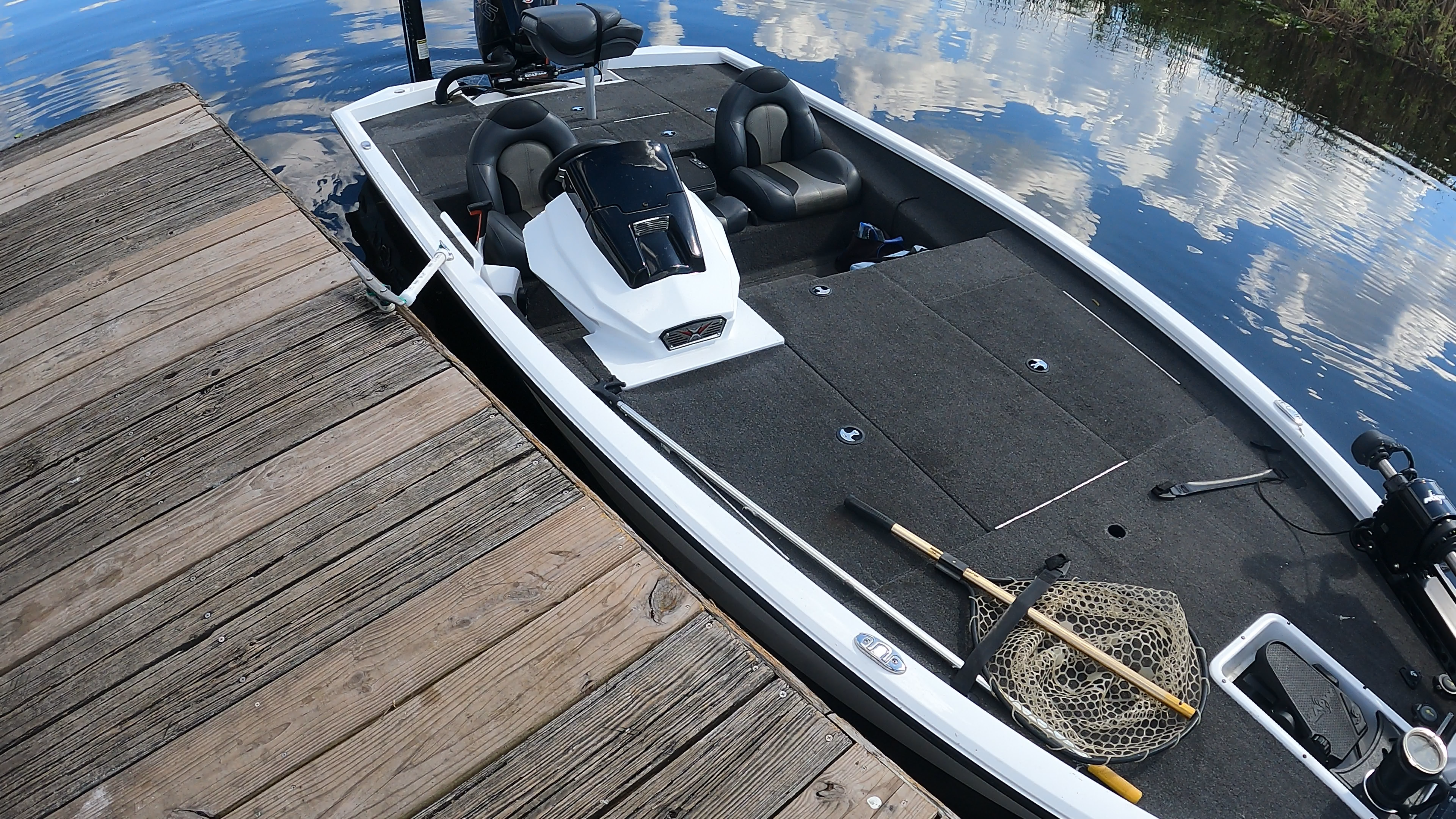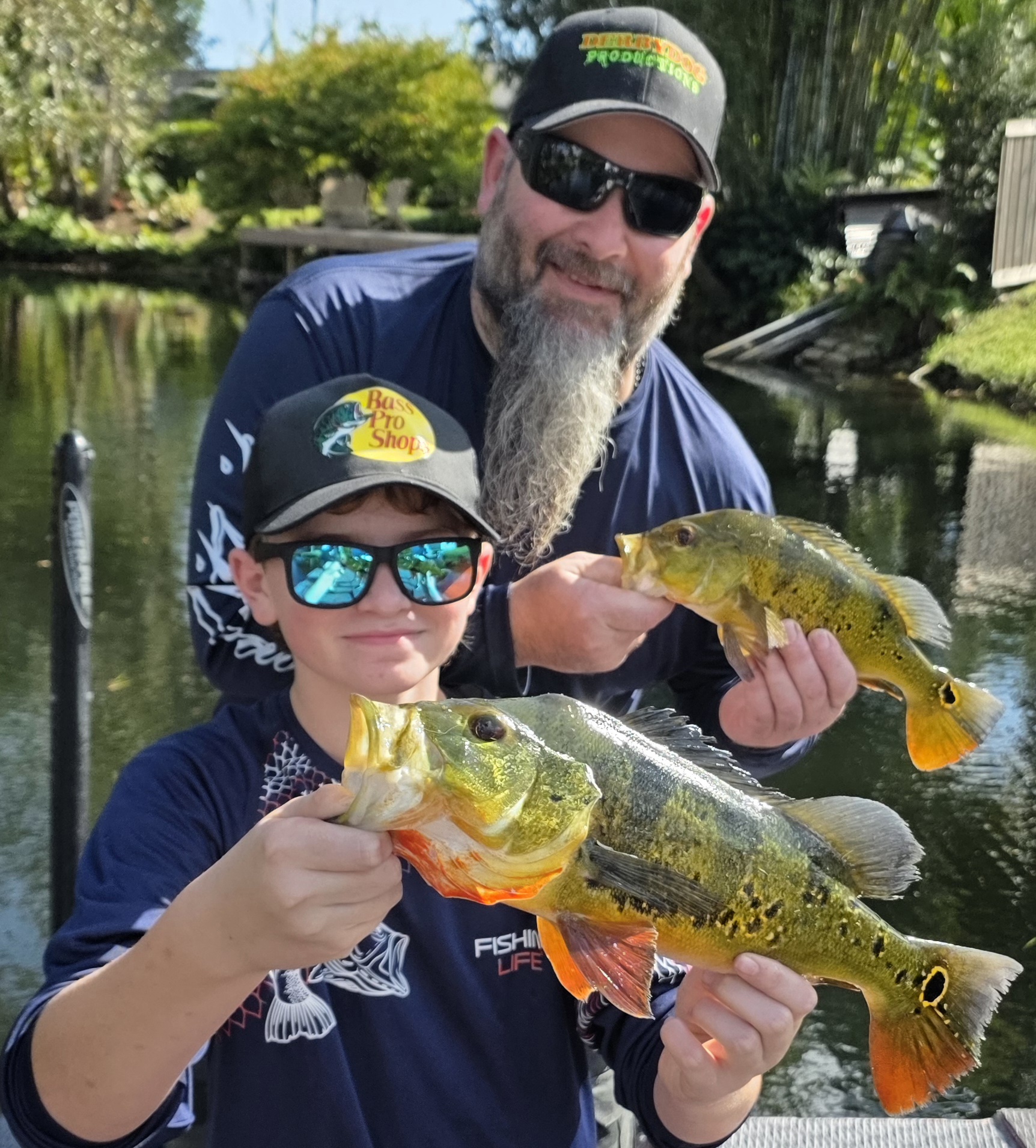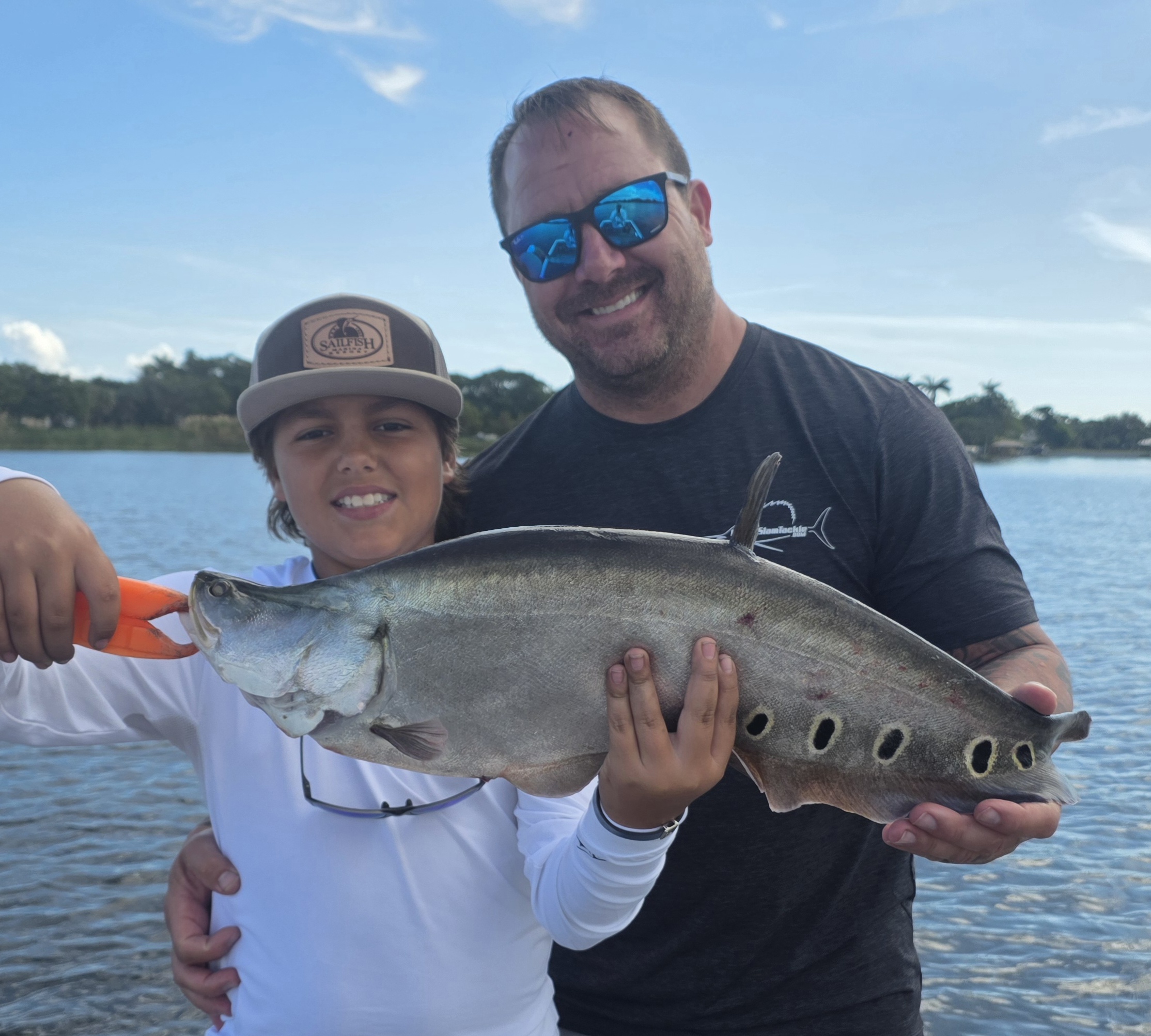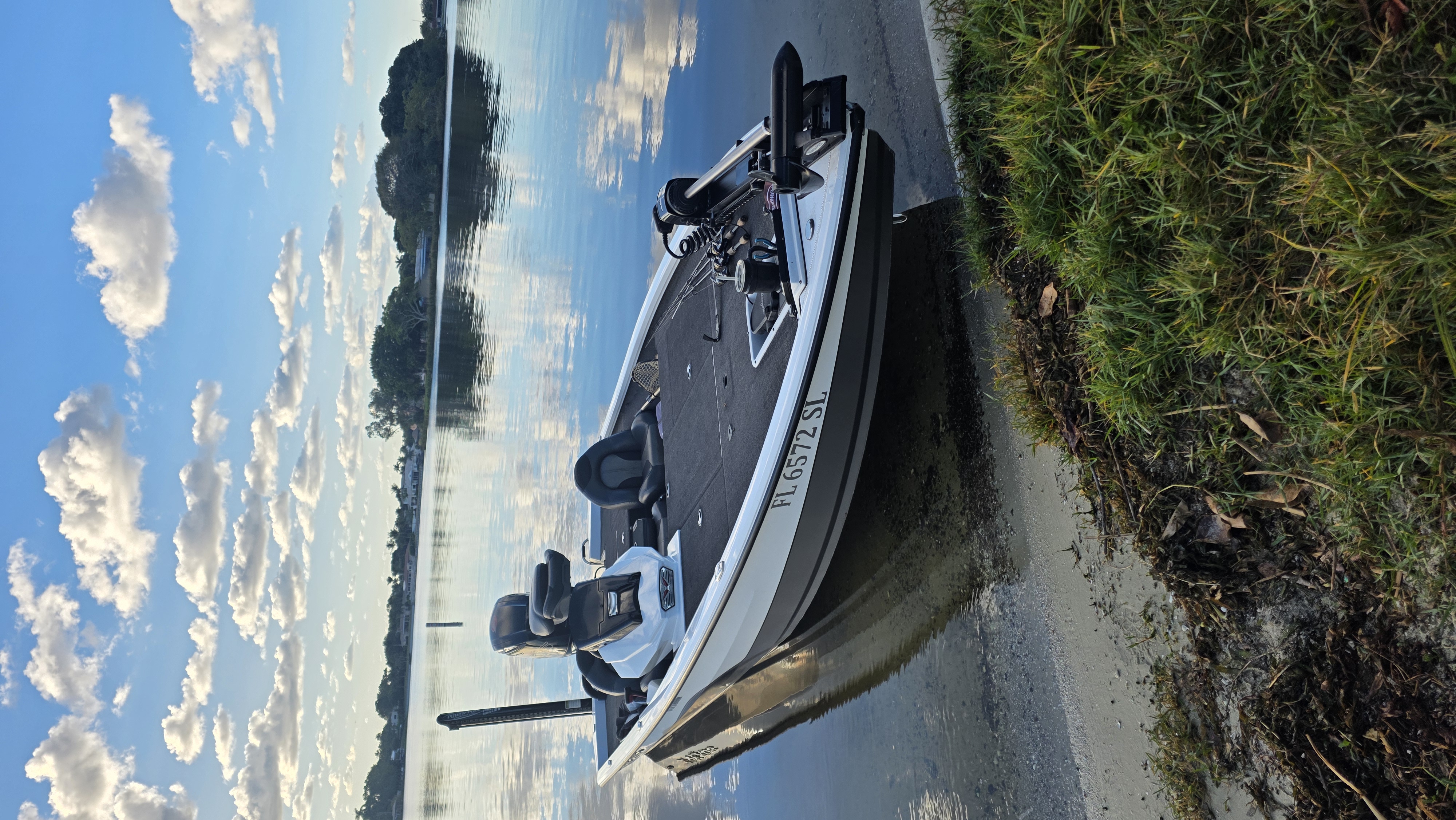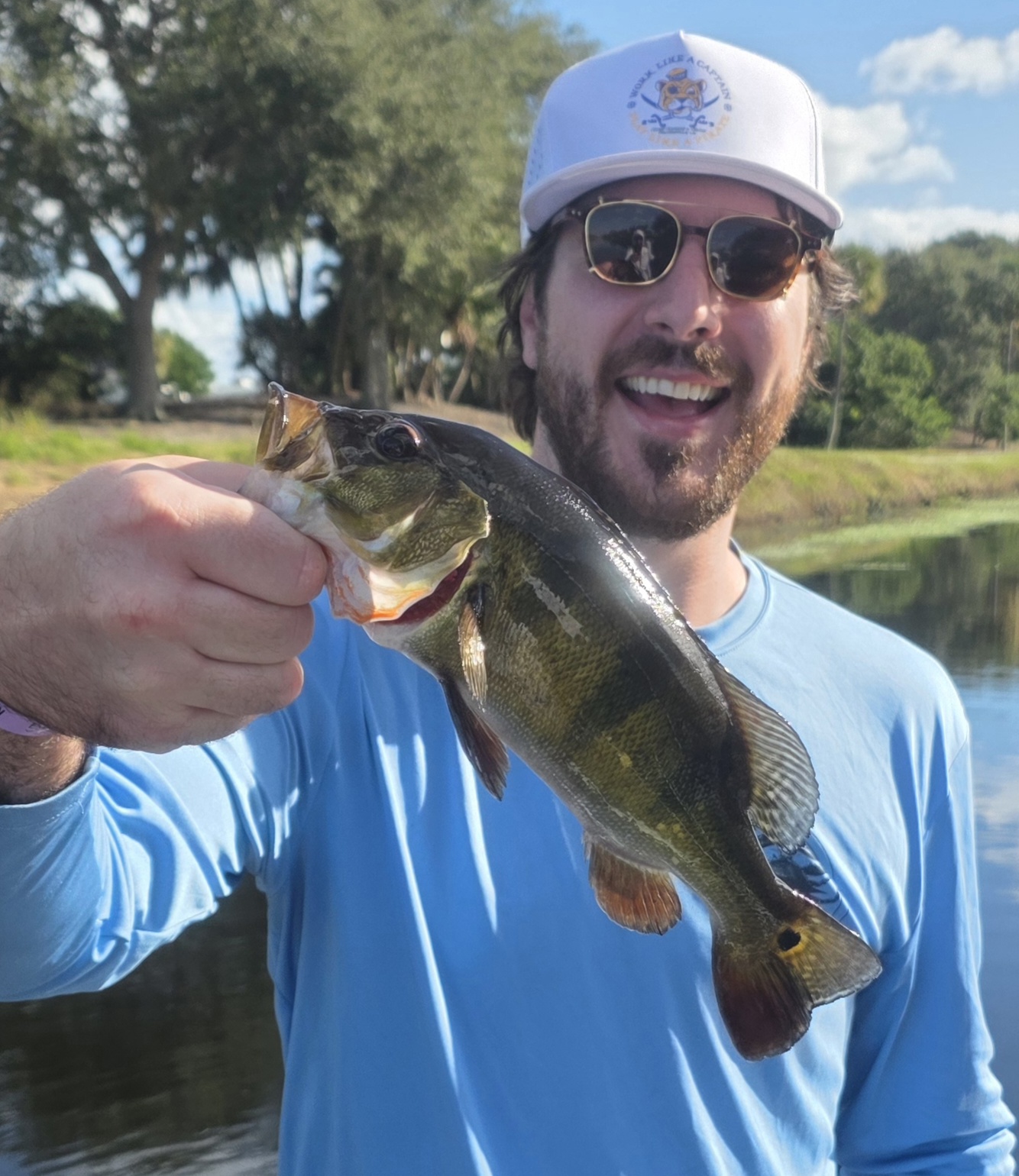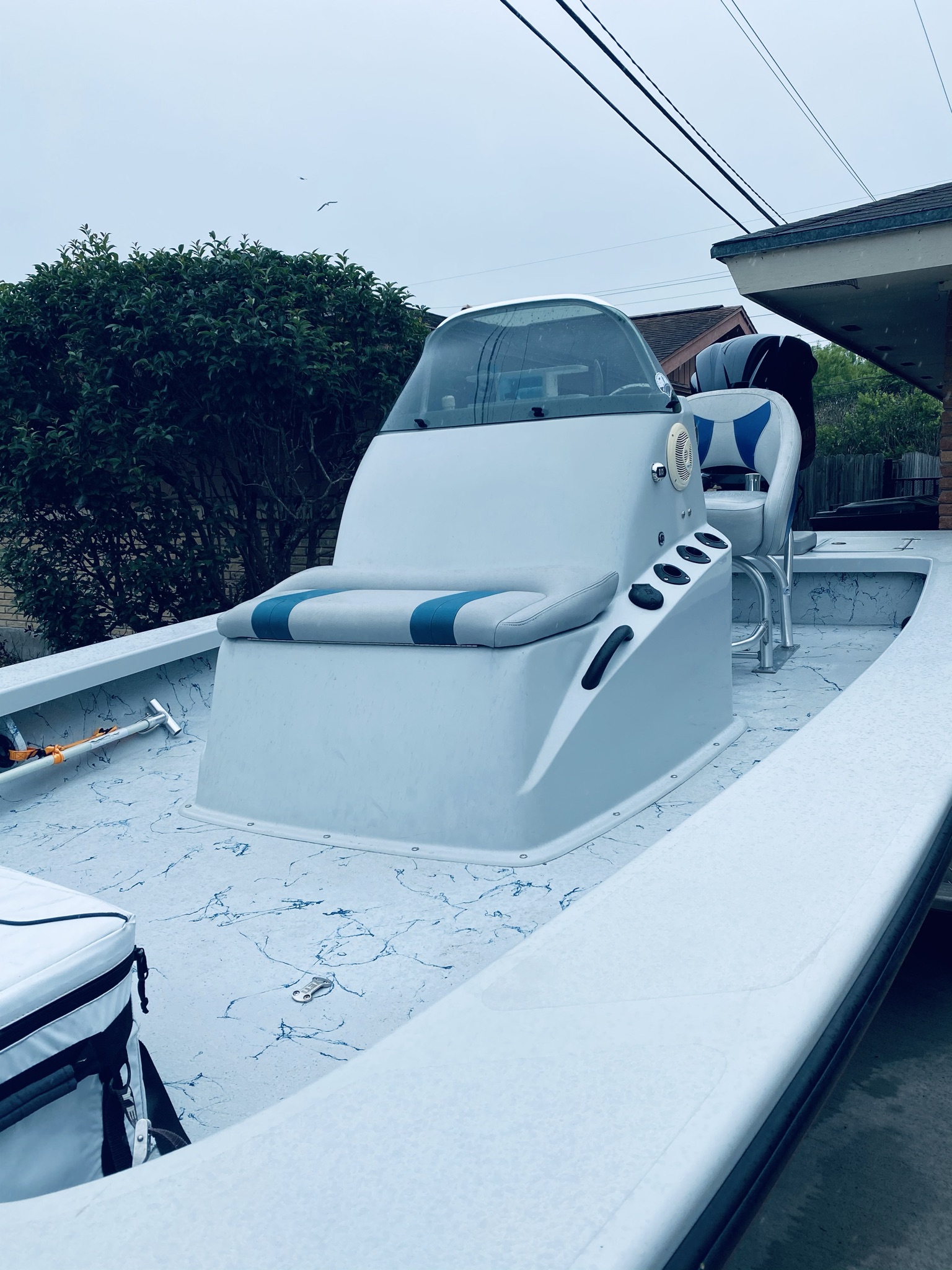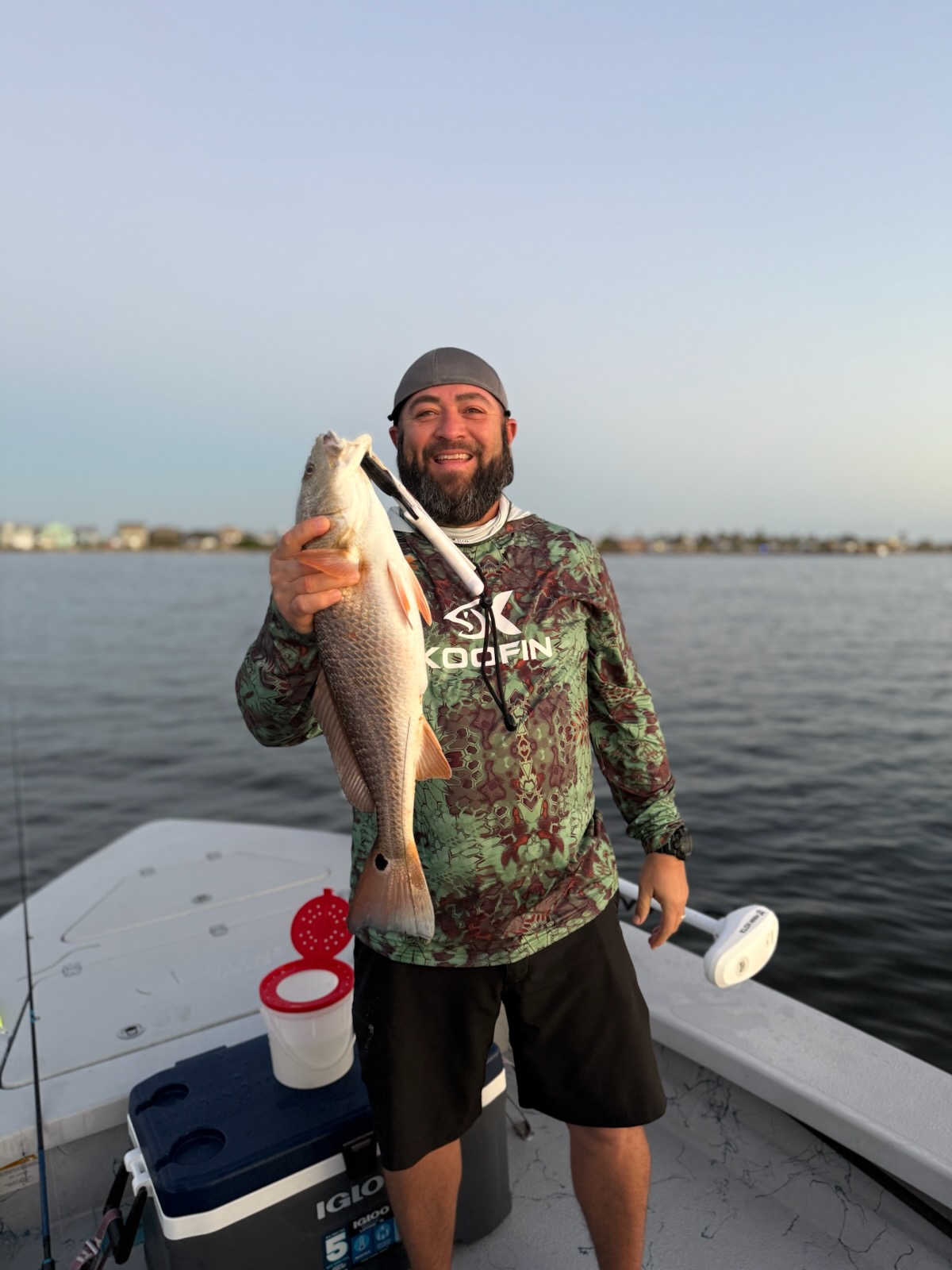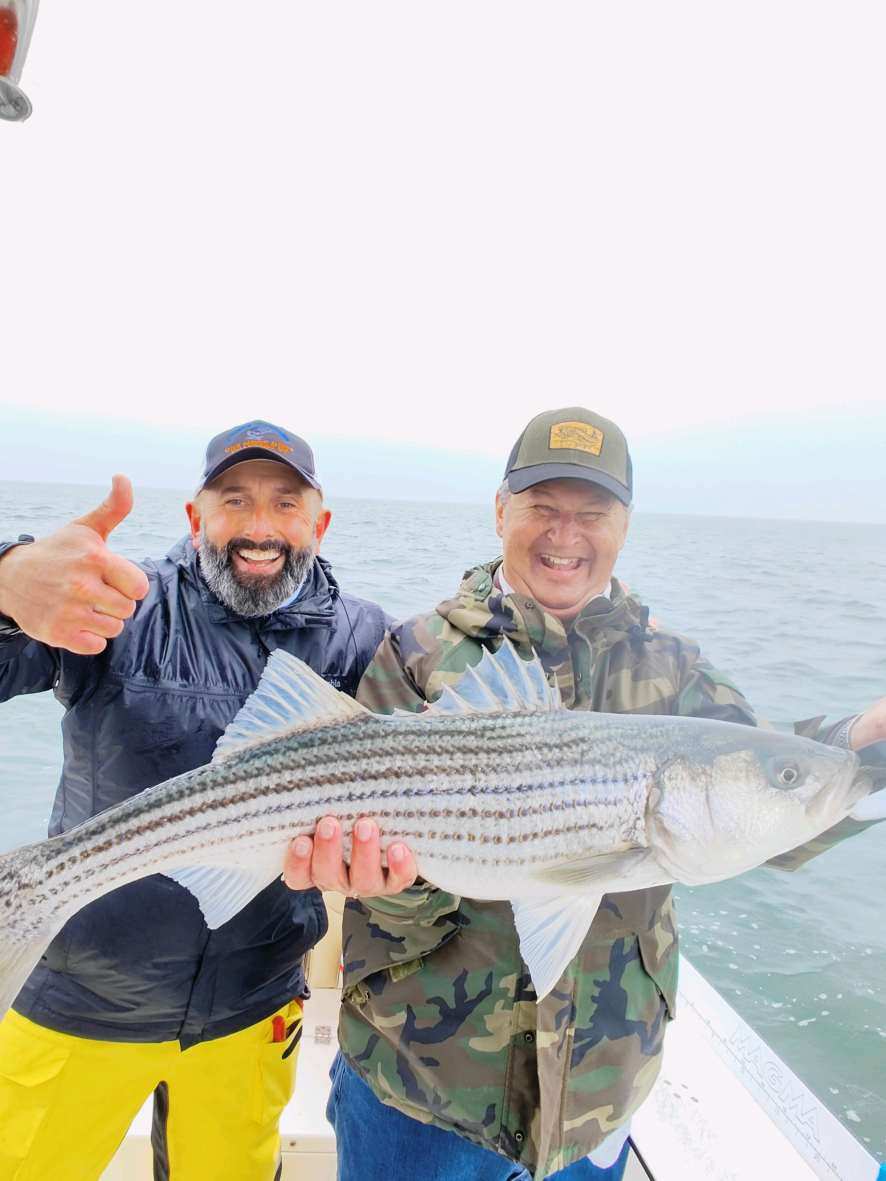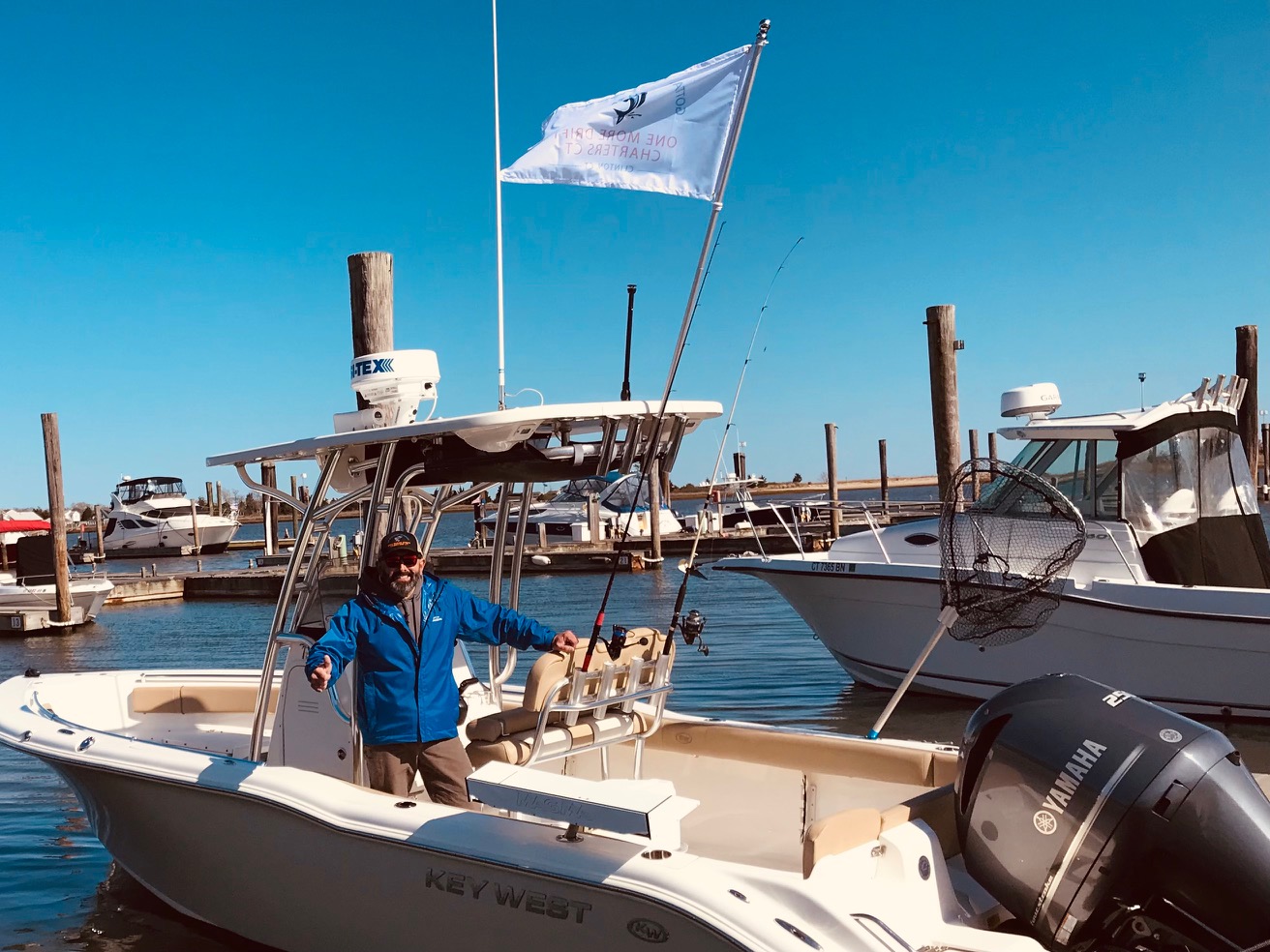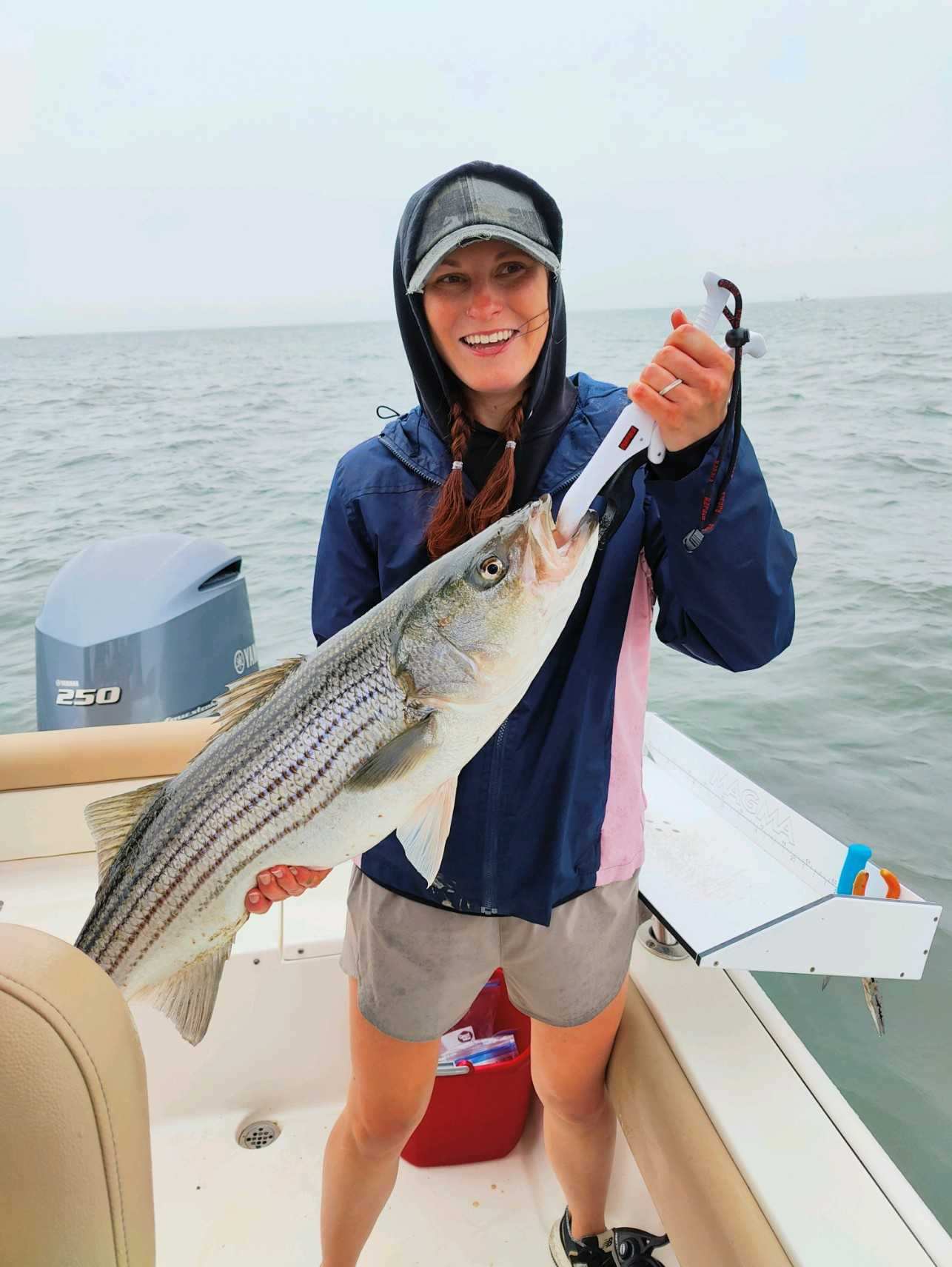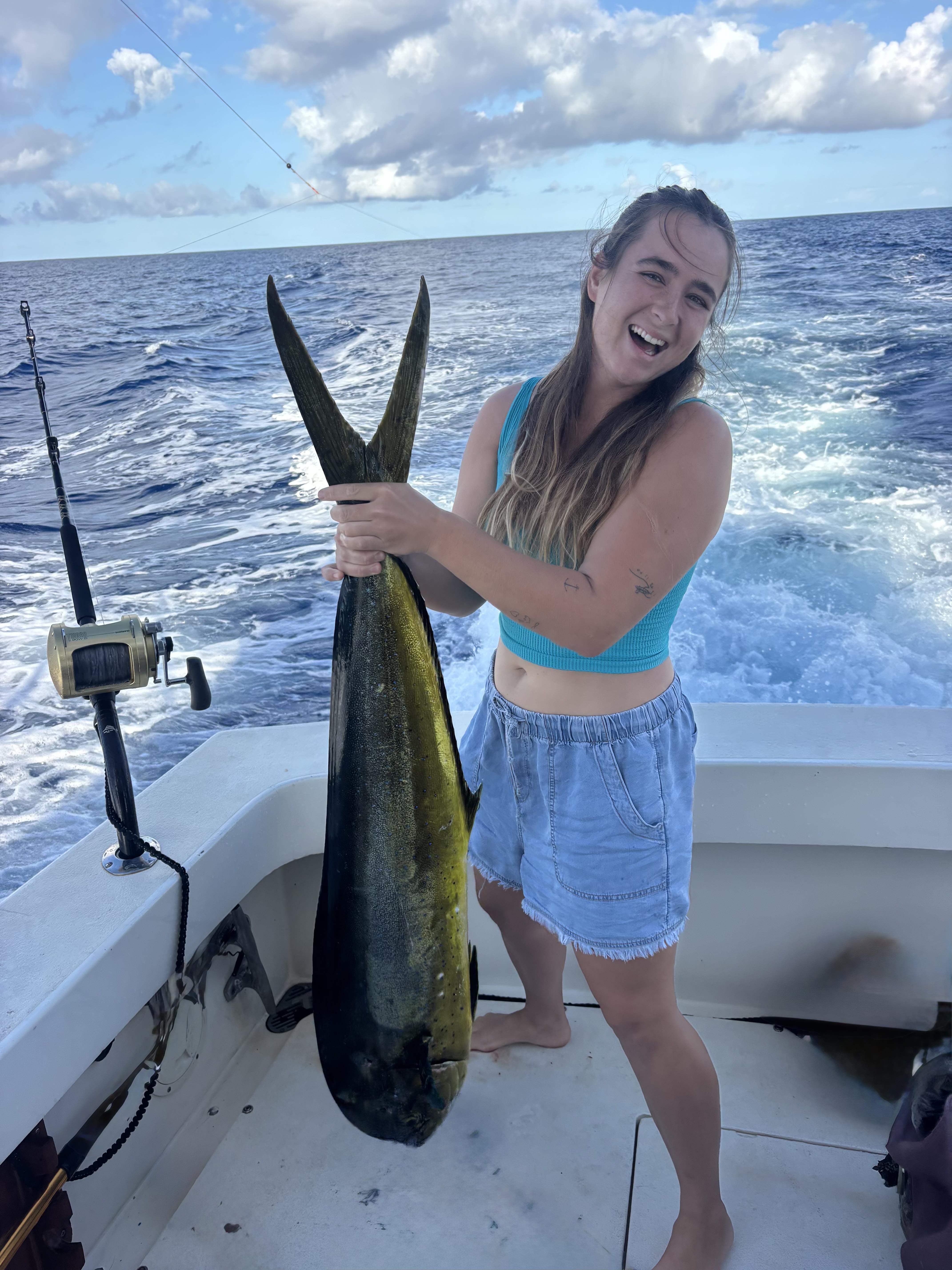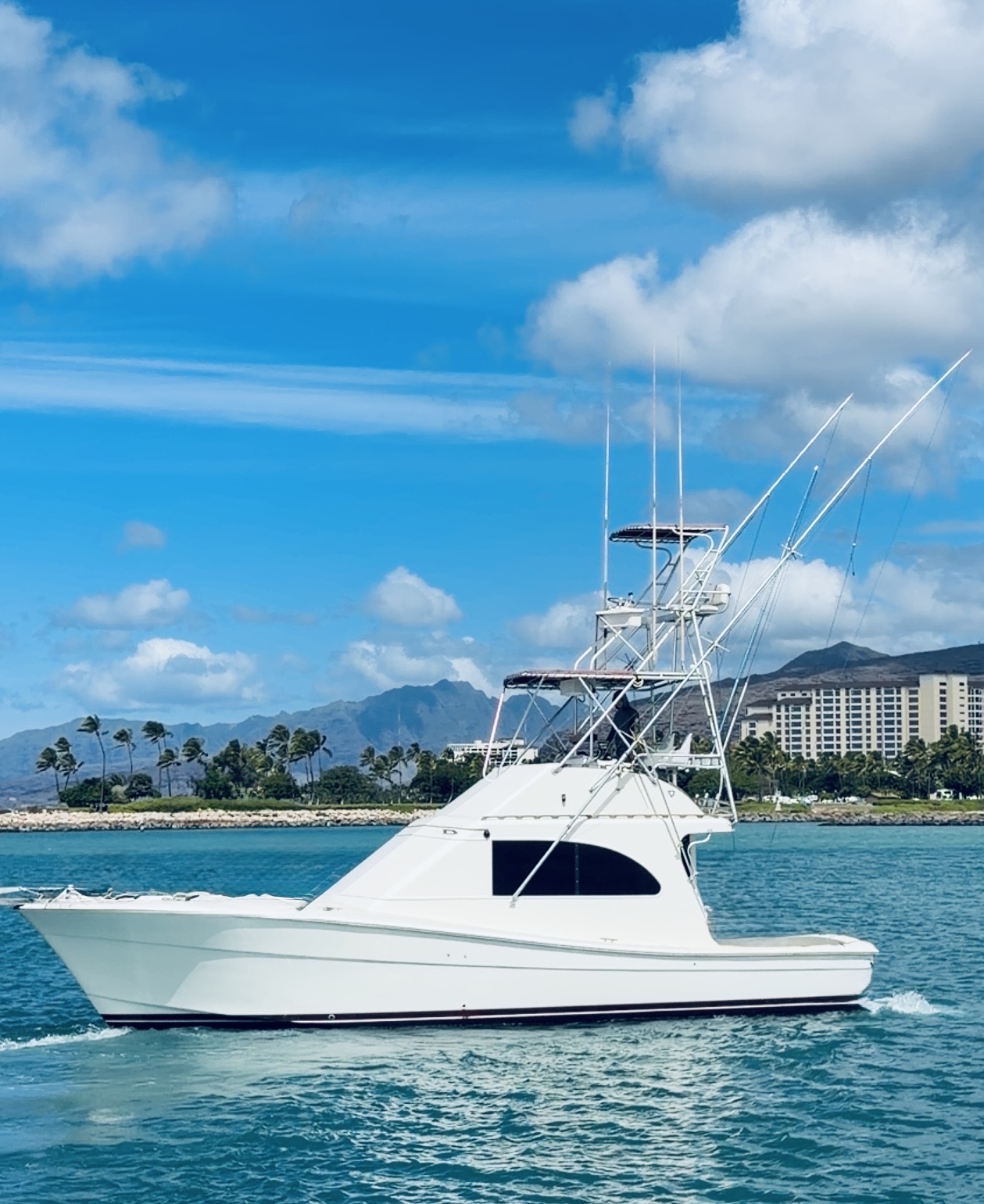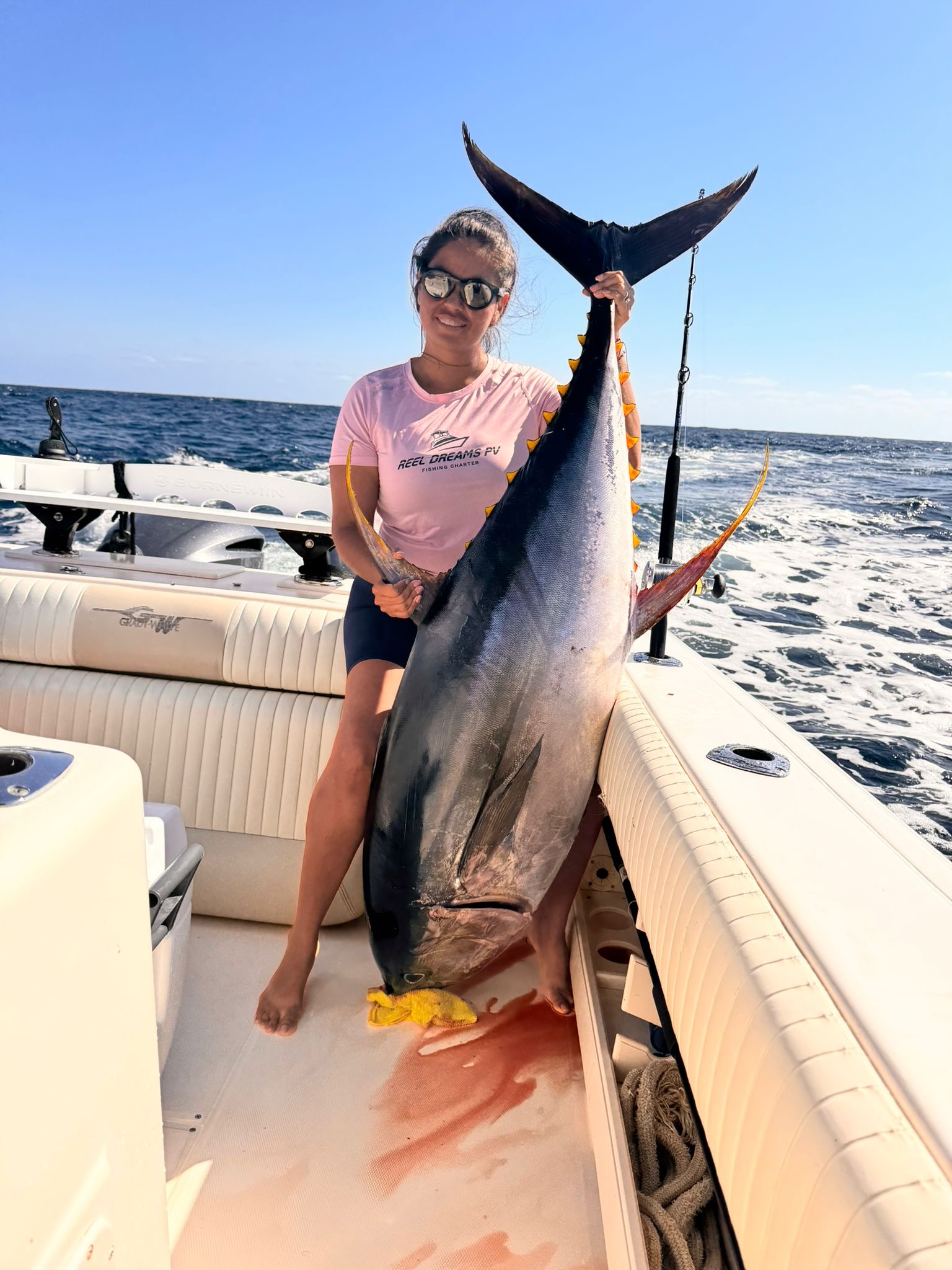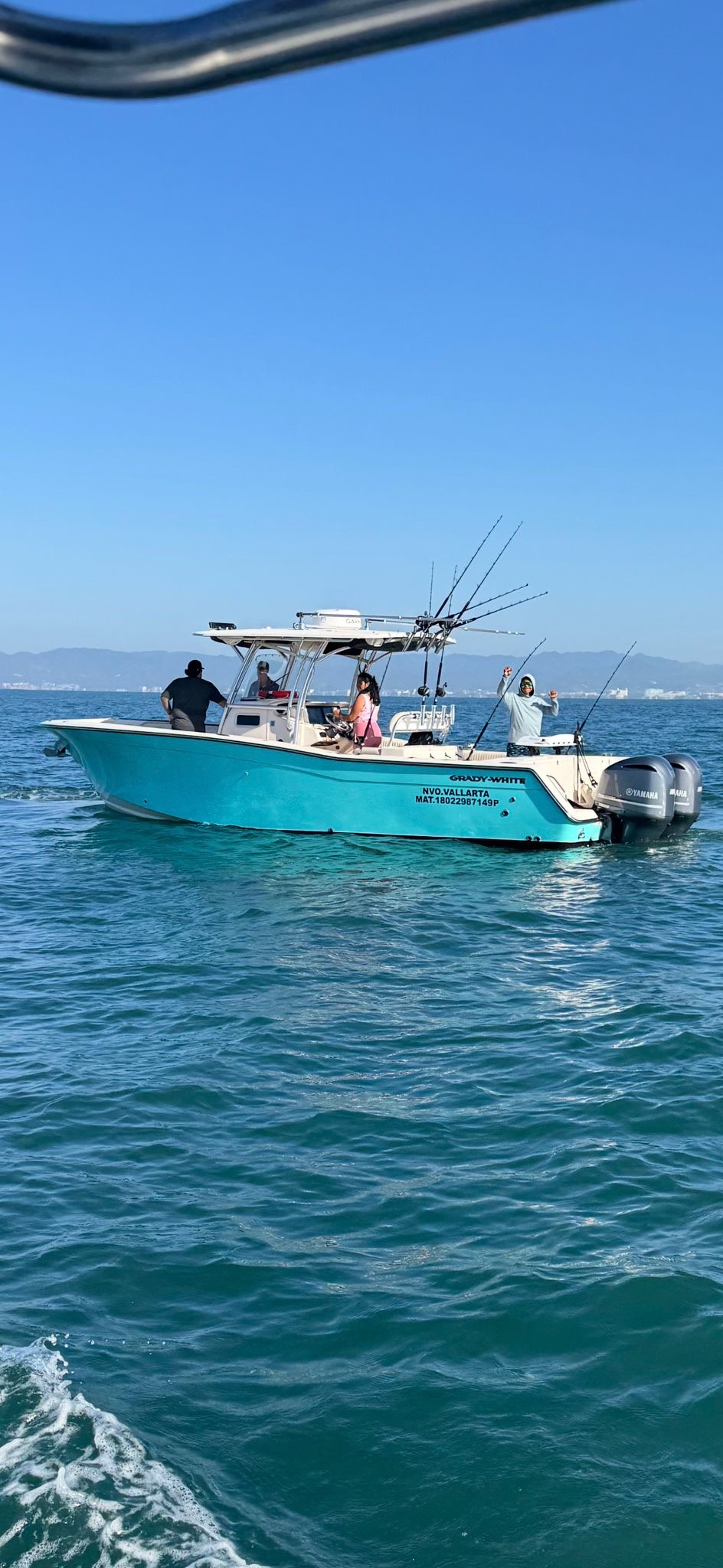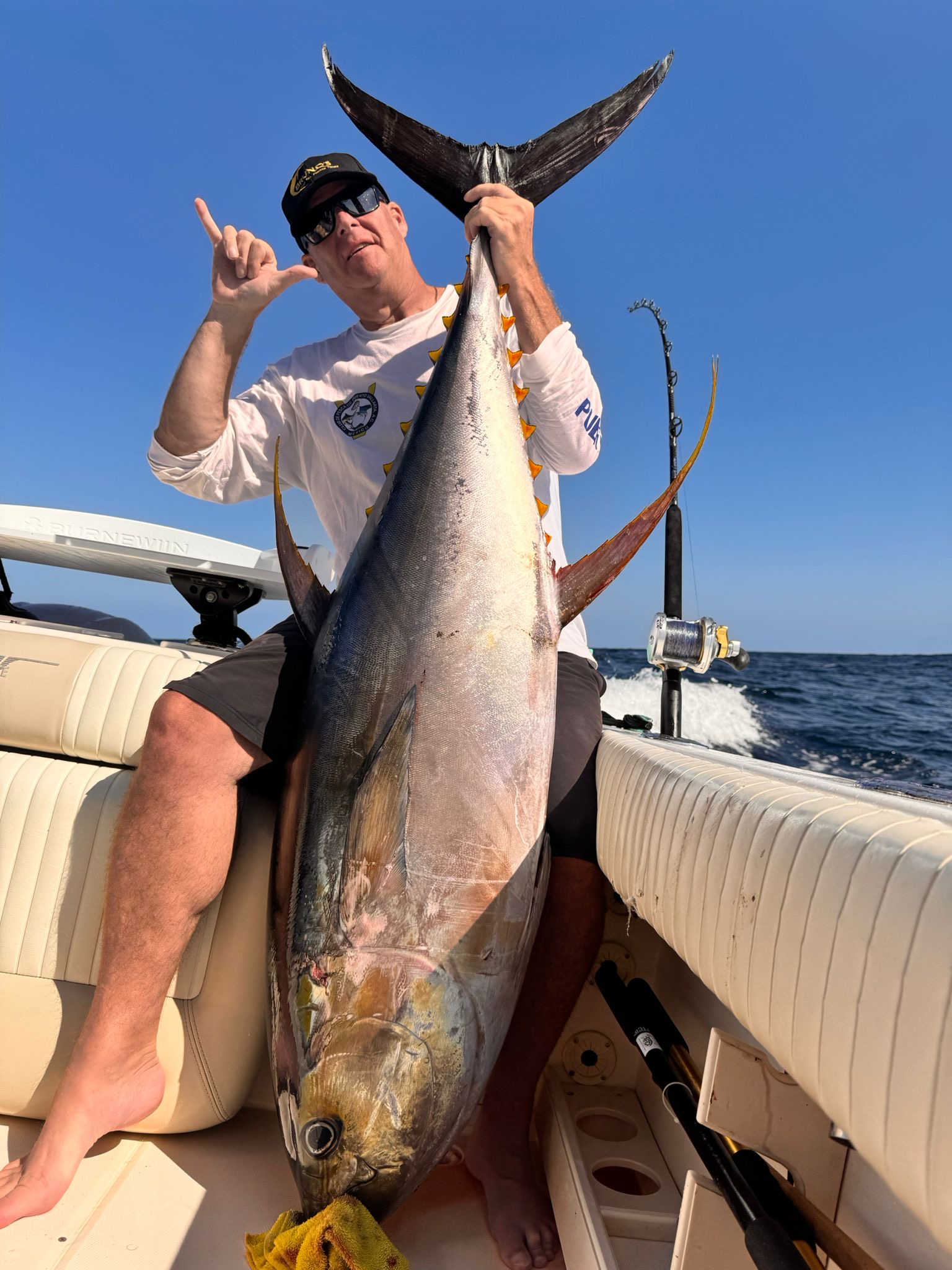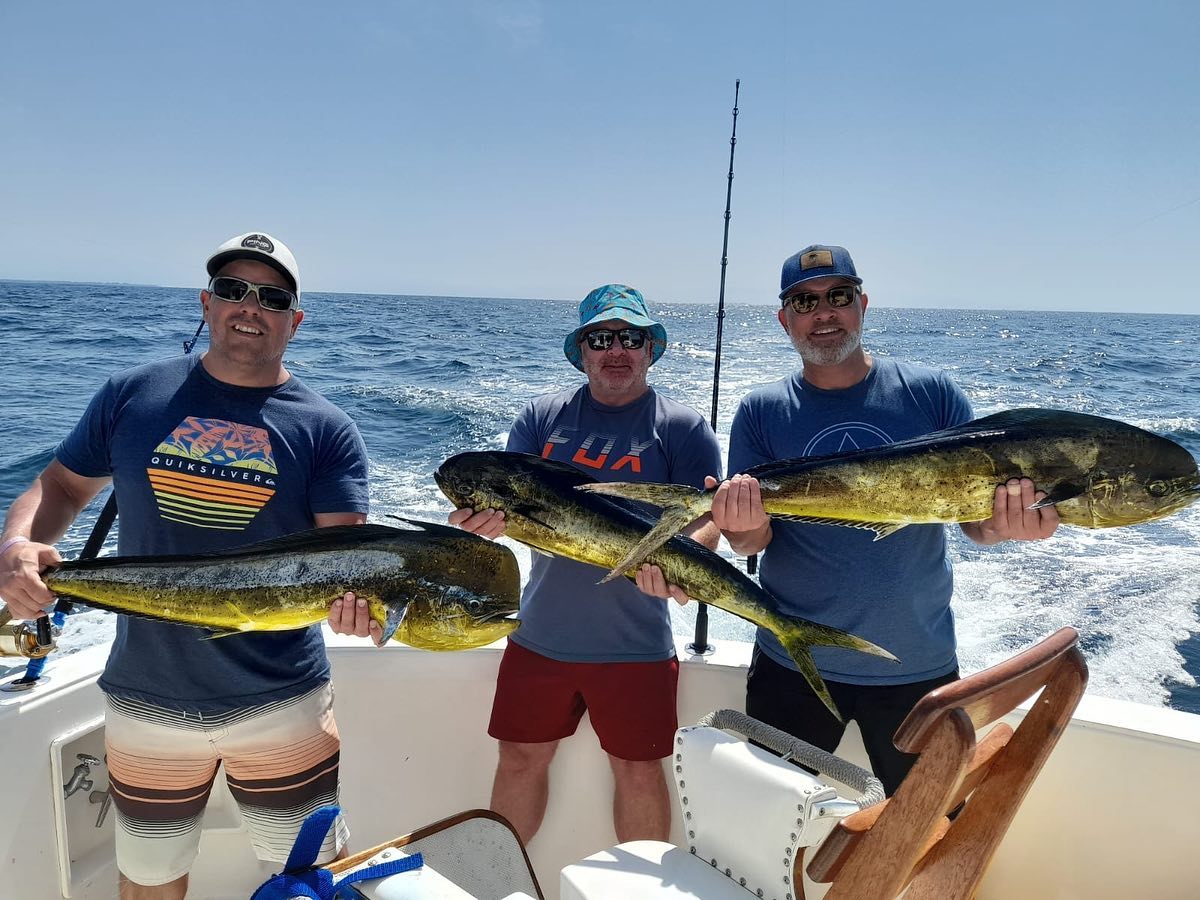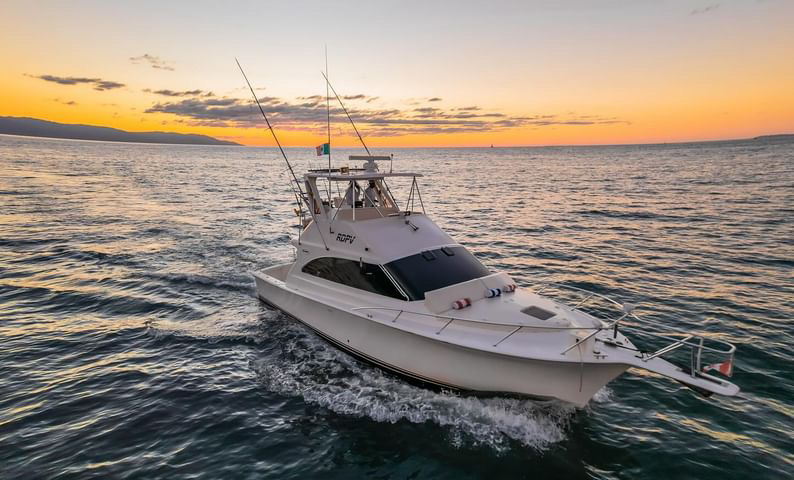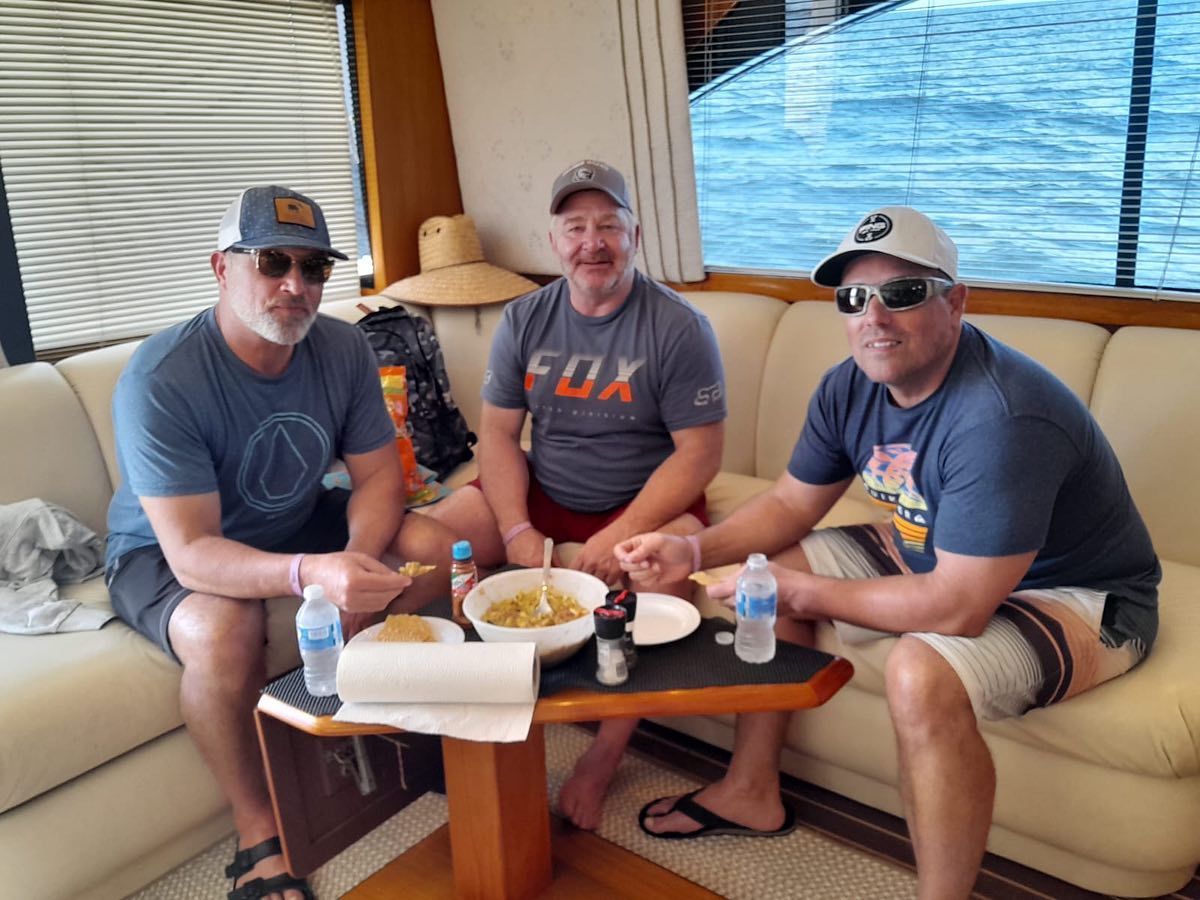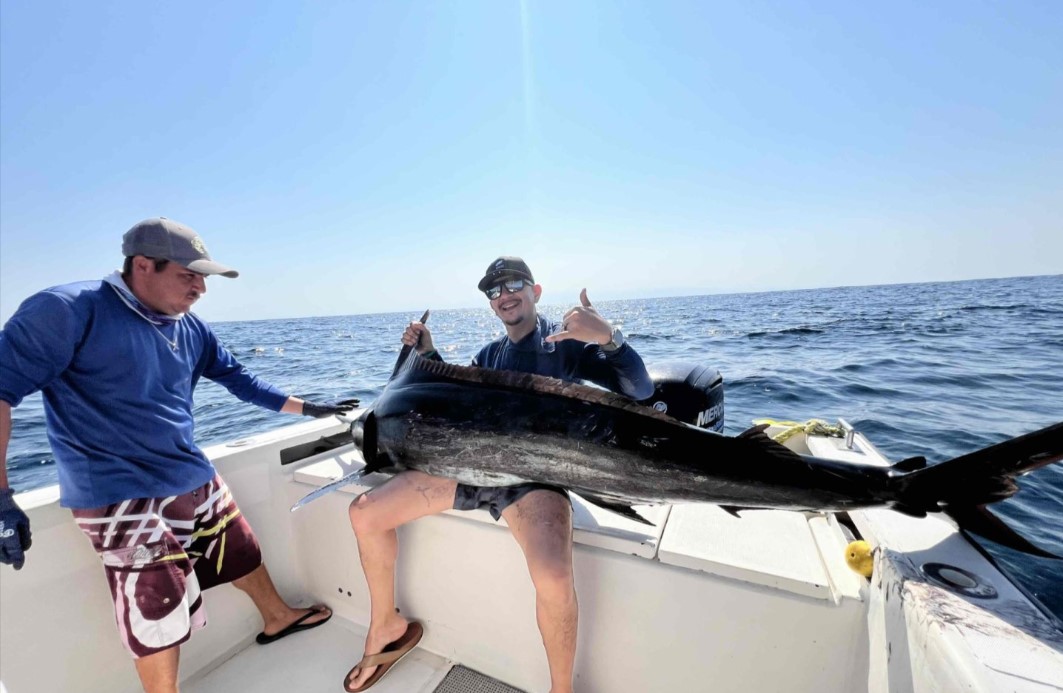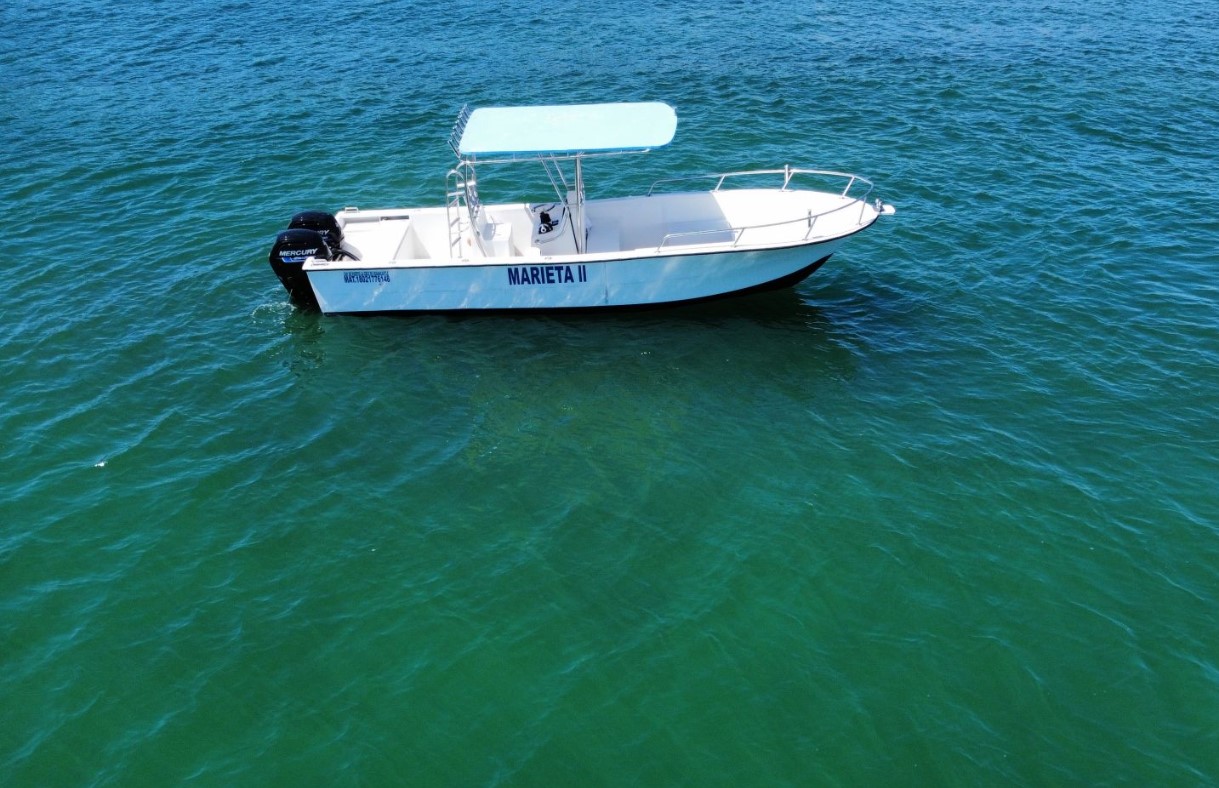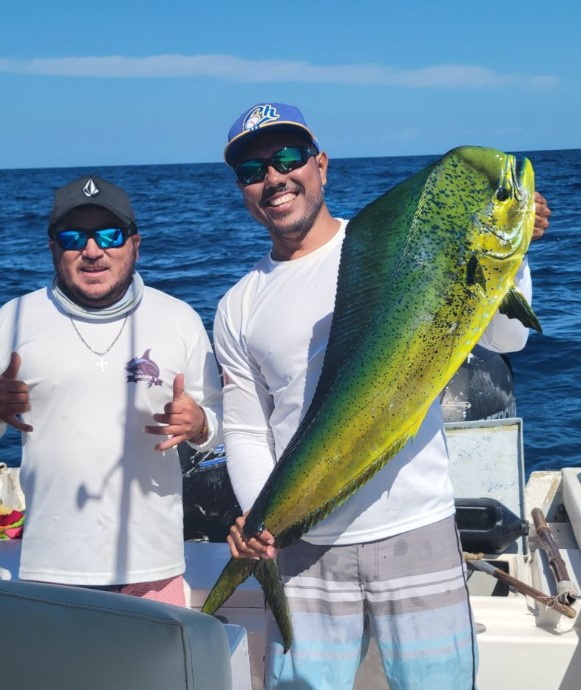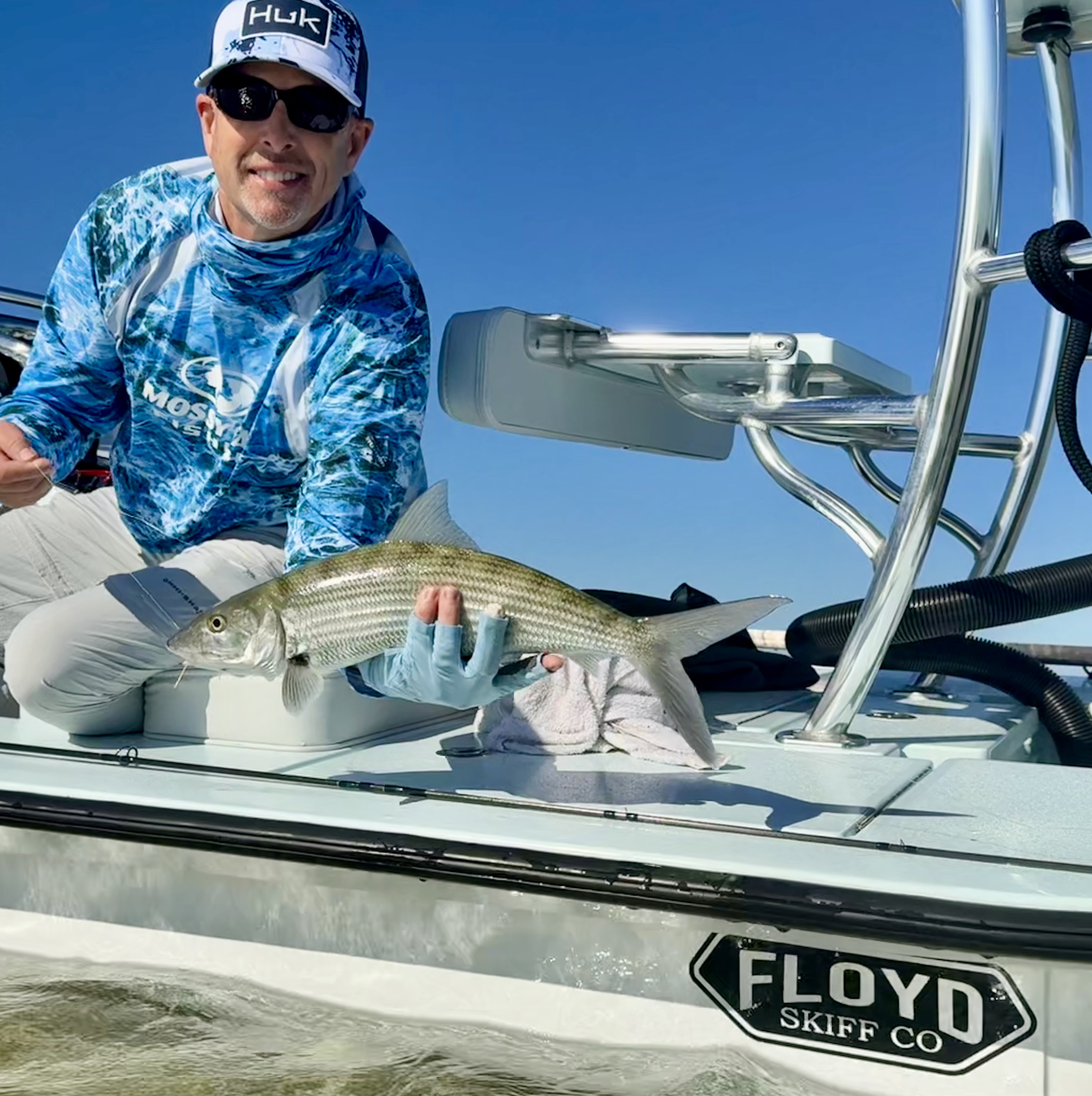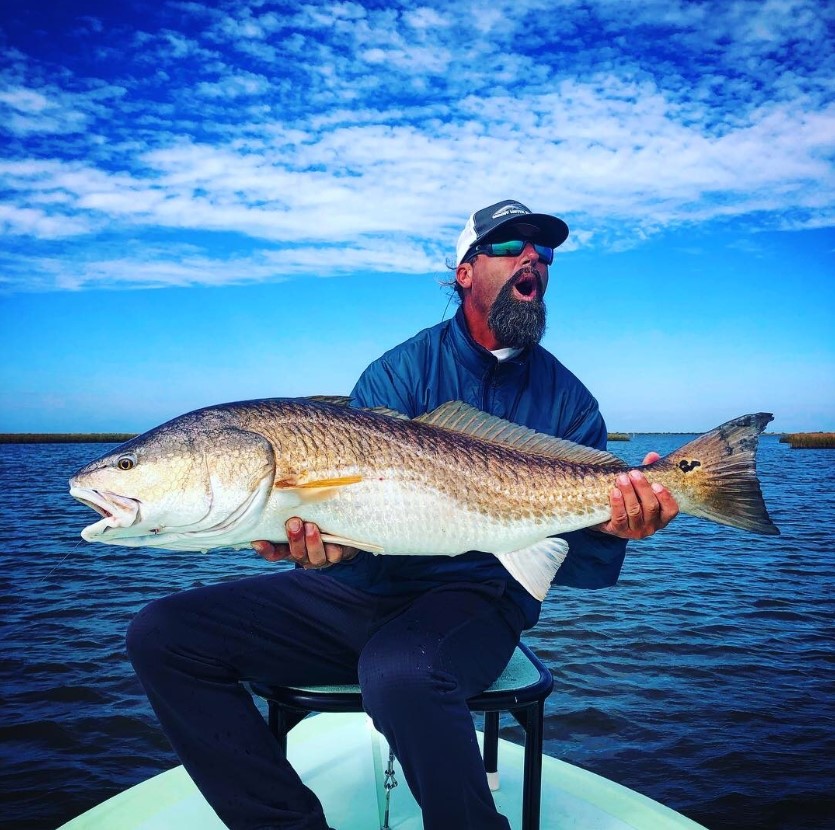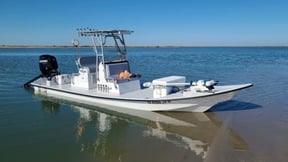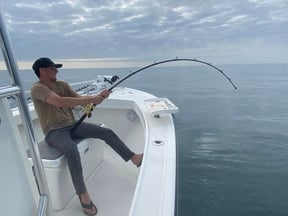Inshore, Nearshore, Flats in Tavernier
Sight Fishing Everglades Natl Park
Miami Peacock (4-8HR)
Lake Ida (4-8HR)
Inshore Fishing in Corpus Christi
Hook, Line & Memories Fishing Trip
Inshore, Nearshore Fishing in Clinton
5HR Trip PM Bottom/ Reef
Deep Sea Fishing in Kailua-Kona
Half Day Charter 4 Hours
Deep Sea Fishing in Puerto Vallarta
31 Ft Grady White Deep Sea Fishing
Inshore, Deep Sea Fishing in Cruz de Huanacaxtle
Luxury 40 Ft Yacht La Cruz
Deep Sea Fishing in Corral del Risco
5-8 Hour Offshore Trip
Inshore, Flats Fishing in Key West
4-8 Hour Inshore Fishing Trip
We started Captain Experiences to make it easy to book fishing and hunting guides around the world. With over 2,000 Damn Good Guides, our platform makes finding and booking a trip seamless. Head here to check out our trips.
When it comes to fishing, you pretty much can’t go wrong as long as you’re on the water and having a good time. But it can sometimes be intimidating if you are newer to the sport and don’t understand the lingo yet (anglers sometimes have a tendency to expect you to know everything and cast beautifully right off the bat!). Below we explain some of the most common terms and concepts that you will come across when looking for a trip, and hopefully make it a little easier to find the best trip for you!
In this post:
- What Are The Different Water Types for Fishing?
- What Is Offshore Fishing?
- What Is Nearshore Fishing?
- What Is Inshore Fishing?
- What is Jetty Fishing?
- What Is Flats Fishing?
- What Is It Like Fishing on Rivers & Lakes?
- What Species Can I Catch on My Trip?
- What Is Conventional Fishing?
- What Is Fly Fishing?
- What Gear Do I Need When Booking A Trip?
- What Is Live Bait, And Do I Need It?
- Does The Type of Boat Matter for Fishing? Does The Size of Boat Matter?
- When Is The Best Time To Go Fishing?
- Why Do Most Fishing Trips Only Allow 6 People?
- I’ve Never Done This Before, Do I Need To Know How To Cast Before Going Fishing?
- What Duration Fishing Trip Should I Book?
- What Happens If The Weather Is Bad on The Day of Our Trip?
- How Much Do I Tip The Captain (And Other Crew)?
What Are The Different Water Types for Fishing?
A water type is simply a general overview of the features of the water in the area you’ll be fishing. Each type will mean you fish different areas, use different types of boats and gear, expect to pay a different price, be out for a longer or shorter amount of time, and catch radically different species of fish. The water type is generally the first decision you will need to make when choosing a fishing trip, as it is so crucial in determining what trip is best for you.
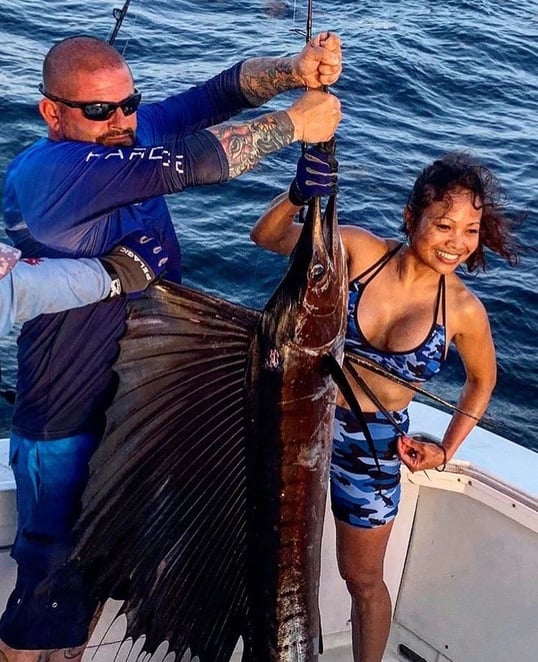
What Is Offshore Fishing?
“Offshore” technically describes all water beyond nine miles from shore. The boats used in these waters are typically center consoles or larger sportfishers that include cabins for sleeping. Because of the distance you need to cover to get to where you want to fish (some trips can head out 100+ miles), your boat needs to be both fast and stable.
A center console will be able to get you out to the fishing grounds quicker but is a much smaller boat. A sportfisher will move slower but includes cabins to sleep and a kitchen, so is commonly used to stay overnight.
Because heading offshore you will be more exposed to weather and waves, it is important to look at the weather when booking, and to listen to your captain’s suggestions here.
These trips will often be the most expensive, as they will use the most fuel to get that far offshore and will involve more expensive and heavier-duty equipment for the larger game fish in the waters (in addition to a bigger, more-expensive boat). The flip-side here is that many of the species you can catch are the largest and (arguably) tastiest fish you can catch, and you’ll get some of your best fights out here.
What Is Nearshore Fishing?
The term “nearshore” can vary in meaning depending on where you are, but generally, and especially in the Gulf Coast, it will mean within about nine miles from shore. Nearshore is generally used as a bridge term to describe the intermediary areas between inshore fishing and deep-water offshore fishing, and as such its exact definition can depend on the depth in the area and what species are present.
A lot of people get offshore fishing and nearshore fishing confused - to be clear, 9 miles is still a long way from shore and you will often not be able to see land. The 9 mile boundary also in many places denotes the difference between state and federal waters, which for captains means different licensing and permitting. Since federal permits are more expensive and harder to come by, it is not uncommon for many charter captains to be limited to within this 9 mile boundary even though they are very capable seamen & women.
What Is Inshore Fishing?
Inshore fishing defines most saltwater or brackish water fishing that will be close to the shoreline, in coastal bays, or near jetties. Typically the water will be less than 30 feet deep, and usually even shallower than that. Fishing seasons tend to be longer, and the waters will be calmer than farther offshore.
The closer you get to shore smaller center consoles and bay boats become more appropriate for fishing, as well as small skiffs, especially for fly fishing.
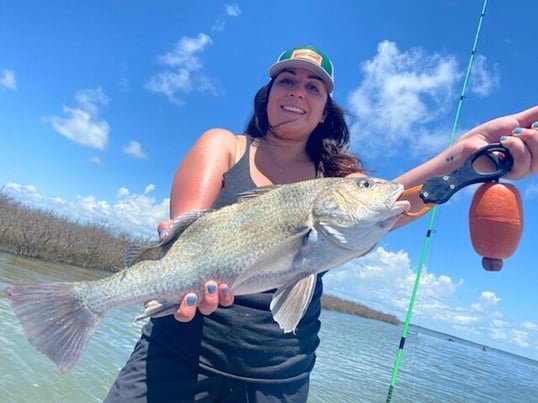
What is Jetty Fishing?
Jetties are generally defined as structure that extends out into a waterway, and you’ll frequently see them as rock structure and piers that extend out on either side of a channel. They are made to mark the channel and fix its location for passing boats, but offer excellent fishing as they are usually deeper than surrounding waters and provide excellent structure for bait fish. This in turn will bring in some of the biggest fish around. Fishing the jetty is a pretty sweet deal - you can cruise out not far from the marina and catch some pretty sizable fish.
What Is Flats Fishing?
Flats are shallow waters that have sand, mud, or gravel bottoms, sometimes surrounded with vegetative beds where fish like to hide. They can be challenging, due to the clearer and shallower water, fish will tend to be more skittish, however they can be a great place to stalk and catch hidden trophies, and are excellent for drift fishing, wade fishing, and sight casting.
What Is It Like Fishing on Rivers & Lakes?
River and lake fishing is more self-explanatory. Freshwater fishing can be done in all manner of tributaries and bodies of water, and the species you find will depend on the body of water, its location, the current, the weather, and everything else in between.
What Species Can I Catch on My Trip?
The types of species you might catch on your trip can depend on a number of factors, not least the location and season. Many species are migratory and will move throughout the year, and all species can behave differently at different times of year, whether due to the weather (entering semi-catatonic states in the winter) or due to their spawn (becoming more aggressive or entering different waters).
Typically, the further you are from shore, the larger and more migratory the fish will get. Species of fish that can be found closer to shore tend to have longer seasons and tend to move less.
All of our trips will have information on what species will be targeted during that trip, and search results can also be filtered by species. If you would like any advice on what would be the best timing or area for the specific species you’d like to target, all you need to do is ask!
Fly vs Conventional Fishing
Both fly and conventional fishing can be used in salt or freshwater, and often for the same species! However there are some major differences to note when looking for what is the best technique for your trip.
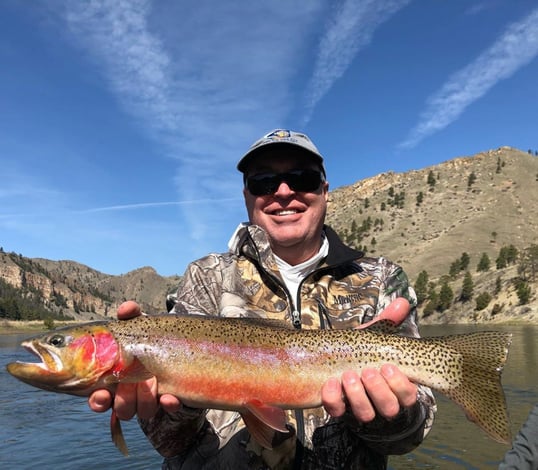
What Is Conventional Fishing?
Conventional fishing is the most standard rod and reel fishing setup that most people probably think of when they think of your classic fishing pole. The most common types of reels used with conventional fishing are spinning reels and baitcasters. Conventional tackle is generally more forgiving for beginners and more resilient when you hook a fish. The tackle is made to hold up under most conditions and will ensure you bring in the fish.
What Is Fly Fishing?
Fly fishing uses a special fly rod, reel, weighted line, and a light-weight artificial fly to imitate natural bait. It takes many hours of practice and perfecting skill to learn the correct method of casting, aiming, and imitating real insects and small fish since the lure itself is so light.
Fly fishing is generally seen as more of an art and a meditative practice, as it requires more patience and trial and error to get right. The tackle is made in such a way to give even smaller fish more of a “fair fight”, and in this way tries to pin the angler against the fish.
What Gear Do I Need When Booking A Trip?
Luckily for most of our trips all fishing gear is provided (unless otherwise specified). However, there are a few items we always recommend bringing. First of all, make sure to bring some snacks and drinks, just no glass and no bananas - glass is a hazard to be avoided on board, and bananas are a well-known source of bad luck for water-faring folk. Second, is sun protection. You’re looking for fish to cook, not to cook your skin!
Finally, depending on the area, you may need a fishing license. License requirements vary by state (or country, if you are heading international), but most states have some exemptions for children, and some states (like Florida and Alabama) do not require fishing licenses when heading out with a licensed saltwater captain (freshwater trips still need to purchase a license). Many states also provide day passes, short term licenses, and licenses for the whole year (for a discount), so make sure to do what is best for you depending on how often you’ll get out there.
What Is Live Bait, And Do I Need It?
Live bait is just that: bait that is still alive when you are using it to fish. Generally you want to stick with local prey which looks particularly appetizing to your target species. The advantage to using live bait is that there is no need to attempt to imitate prey (your bait is EXACTLY what your catch is looking for), so there is less of an emphasis on using special techniques to attract the fish.
While live bait is known to perform well, it costs more and even still will not guarantee success. Artificial lures will attract fish, they just take a bit more technique to use. There are also certain types of fishing where live bait is not recommended.
Does The Type of Boat Matter for Fishing? Does The Size of Boat Matter?
It is typical for larger boats to go offshore, and smaller boats to stay inshore, however this isn’t a written rule, and when it comes down to what “matters” it’s more about personal preference and what area you are fishing. Below are some of the most commonly found boats on guided trips.
Bay boats and skiffs typically stay inshore, as they are smaller, usually between 15 and 25 feet in length. They will be shallower boats, and skiffs especially will have flatter bottoms (many bay boats and skiffs have a “draft” of under a foot - they can handle some shallow water!). They are great for navigating the shallower waters, and depending on the size usually only up to four adult anglers comfortably.
Center consoles are larger, typically between 20 and 40 feet long. These boats can be used anywhere from inshore to offshore. They have a much higher side that comes out of the water, as well as a deep V bottom to handle bigger waves. Center consoles also will usually have a small roof section (the T-top) covering the steering area and partially the back of boat (stern) providing some shade.
Finally, sportfishers are typically the nicest, largest, and also most expensive options that are typically strictly for offshore, though occasionally will do nearshore trips in style. They will have a rear deck from which to fight the fish, with a cabin and a flybridge above. A flybridge is a platform on the top of the cabin. Typically, sportfishers will range from 35 to 55 feet long, but some can get over 70 feet long. These boats will typically have luxuries like air conditioning, televisions, kitchenettes, bunks, and more.
In terms of make & model of the boat you’ll be heading out on, this is also up to you! Nicer boats generally cost more to the guide and they need to pass on some of that cost to the customer, and it's up to you to decide what to go for. Boat breakdowns also happen from time to time, and caring for a boat is just like a car - it must be taken for regular maintenance. Captains often have good relationships with their mechanics! In the event that a breakdown does happen, we’ll work to get you on another boat, or back out on the water.
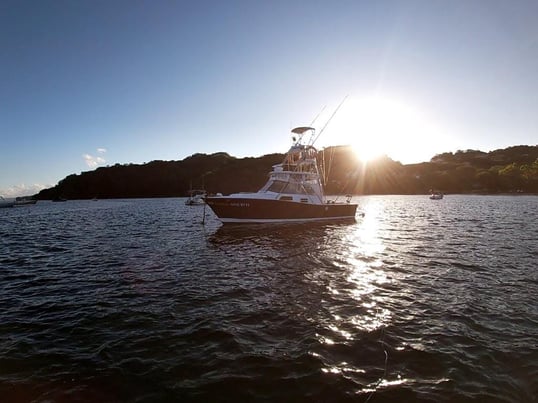
When Is The Best Time To Go Fishing?
The best time to go fishing really depends on what type of fish you are targeting, whether or not they are in season, and where you are looking to fish. The most popular times to go fishing tend to be the summer and early fall, but this varies a lot, and there is always something to target no matter where you are.
Many fish bite earlier in the morning or at dusk, but this will vary depending on the wind, temperature, atmospheric pressure, and just about everything else you can think of. Fish behave a lot like a human might - when the going is good they are happy, when its too cold or too hot or its hard to find food, they will be less happy. All of this factors into when the fish will be biting on any given day, and if there were an easy answer here, we'd be catching a lot more fish!
Fish behavior can vary day to day, and it is best to listen to your guide. They might recommend starting an hour earlier or later to catch the bite, and we suggest you listen!
Why Do Most Fishing Trips Only Allow 6 People?
The number of passengers a charter boat can have is federally regulated to ensure the safety of guests. The goal of these regulations is to make sure there aren’t too many people crowded on a small boat (although you wouldn’t want to do this anyways - can you imagine 8 people trying to cast off a bay boat? You’d be hooking more people than fish!).
Many charter captains have what’s called a 6-pack license, which means they are licensed to take out up to 6 people. There are also 4-pack licenses, and some guides restrict their boats to 2-4 people regardless if they are fishing inshore from a small boat - this allows more safety, better fishing, and better instruction from the guide to you. Some boats are also licensed to carry more than 6 people, and these are generally called party boats, because their trips are often open to the public, although sometimes it is possible for large private groups to rent them out.
Many groups come to us with groups of 7-12 people and want to get out there together. We have a large network of guides and are happy to arrange 2+ boat trips to get everyone out there together. You can even start some friendly competition across boats.
I’ve Never Done This Before, Do I Need To Know How To Cast Before Going Fishing?
No! Our guides would love to help teach you the ropes. One of our goals in creating Captain Experiences was to make it easy and comfortable for anyone to book a fishing trip, with the hope that you will enjoy it and become a lifelong angler! You can search by skill level on the site, and most guides would be happy to get you on your first fish!
What Duration Fishing Trip Should I Book?
You’ll see anything from 2-48+ hours, although the most common durations are 4, 6, and 8 hour trips. The decision for how long you want to spend on the water is totally up to you, but generally you will get more quality fishing for a lower price the longer you are on the water. The biggest expense for a trip is fuel, and a 4 hour trip can often require almost as much fuel as a full-day trip (you still need to make it out to the fishing grounds). You’ll also often use more of your time getting to the fishing grounds.
The reason you can’t take a true offshore trip on a half-day is because it might take 2 hours to get to where you want to fish - you’d have to turn around right when you got there! We love fishing and would always advocate for more time on the water, but for small kids or those who need to use the restroom frequently (some boats have restrooms, but many smaller boats do not), we recommend trips on the shorter side.
What Happens If The Weather Is Bad on The Day of Our Trip?
We offer a weather guarantee, and in the event of bad weather (as determined by the guide - they know their home waters best) we will issue a full refund. While we cannot change the weather, we can make sure that you are not paying to sit at the dock! If we can get you out later in your trip, we will do our best.
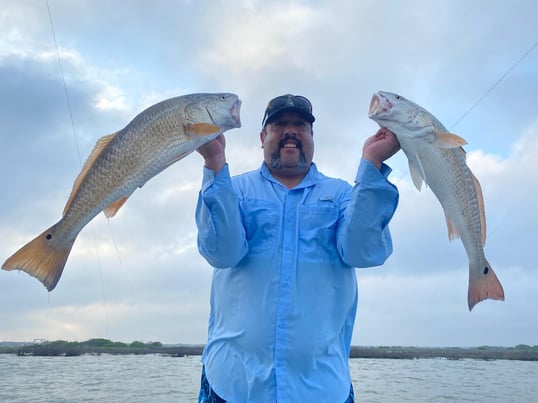
How Much Do I Tip The Captain (And Other Crew)?
This is at your discretion, but is generally around the same as you might tip at a restaurant, or around 20%. Much of the cost of the trip go to fuel, bait, lures, boat upkeep, marina slip fees, and other costs, so the tip is a great way for captains and crew to get some money to take home. It is a reward for a job well done.
So that's it - there are a lot of variables that go into which trip is right for you, and everyone weighs them differently. Some people care about the boat, some care about the guide, some care about the species, some care about the duration, etc. It is up to you to do your research and figure out what is best for you (and our team is always here to answer any questions)!

January 7, 2022
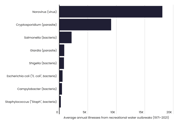
July 1, 2024

June 28, 2023

June 22, 2022

March 8, 2022
Related Articles
June 28, 2023
December 28, 2021
May 11, 2023
Featured Locations
- Fishing Charters Near Me
- Austin Fishing Guides
- Biloxi Fishing Charters
- Bradenton Fishing Charters
- Cabo San Lucas Fishing Charters
- Cancun Fishing Charters
- Cape Coral Fishing Charters
- Charleston Fishing Charters
- Clearwater Fishing Charters
- Corpus Christi Fishing Charters
- Crystal River Fishing Charters
- Dauphin Island Fishing Charters
- Daytona Beach Fishing Charters
- Destin Fishing Charters
- Fort Lauderdale Fishing Charters
- Fort Myers Fishing Charters
- Fort Walton Beach Fishing Charters
- Galveston Fishing Charters
- Gulf Shores Fishing Charters
- Hatteras Fishing Charters
- Hilton Head Fishing Charters
- Islamorada Fishing Charters
- Jacksonville Fishing Charters
- Jupiter Fishing Charters
- Key Largo Fishing Charters
- Key West Fishing Charters
- Kona Fishing Charters
- Lakeside Marblehead Fishing Charters
- Marathon Fishing Charters
- Marco Island Fishing Charters
- Miami Fishing Charters
- Montauk Fishing Charters
- Morehead City Fishing Charters
- Naples Fishing Charters
- New Orleans Fishing Charters
- New Smyrna Beach Fishing Charters
- Ocean City Fishing Charters
- Orange Beach Fishing Charters
- Panama City Beach Fishing Charters
- Pensacola Fishing Charters
- Pompano Beach Fishing Charters
- Port Aransas Fishing Charters
- Port Orange Fishing Charters
- Rockport Fishing Charters
- San Diego Fishing Charters
- San Juan Fishing Charters
- Sarasota Fishing Charters
- South Padre Island Fishing Charters
- St. Augustine Fishing Charters
- St. Petersburg Fishing Charters
- Tampa Fishing Charters
- Tarpon Springs Fishing Charters
- Venice Fishing Charters
- Virginia Beach Fishing Charters
- West Palm Beach Fishing Charters
- Wilmington Fishing Charters
- Wrightsville Beach Fishing Charters
